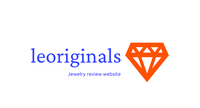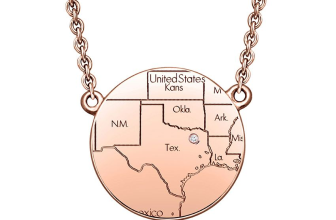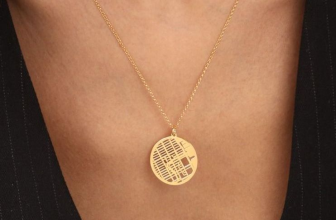
1. Etsy
Inception Date: Founded on June 18, 2005.
General Review: Etsy is an American e-commerce company that focuses on handmade, vintage items, and craft supplies, with jewelry being one of its prominent categories. The platform is akin to an open craft fair, allowing sellers to create personal storefronts. Etsy has broadened its scope to include mass-manufactured items since 2013. As of the end of 2022, Etsy boasted over 100 million items, connecting 7.5 million sellers with 95.1 million buyers. The platform had a gross merchandise sales of $13.3 billion, highlighting its vast market presence.
- Pros:
- Diverse Marketplace: Offers a wide range of categories, appealing to various customer tastes.
- Seller Autonomy: Sellers can set their product prices and choose payment options.
- Unique & Artistic: Popular for side-businesses and items made from recycled materials, encouraging unique and artistic product photos.
- Buyer & Seller Protection: Introduced a purchase protection program for both buyers and sellers in June 2022.
- Cons:
- Fees: Charges a listing fee of $0.20 per item and takes 6.5% of the final sale price, including postal fees.
- Reserve System: As of July 2023, Etsy began holding 75% of sellers’ earnings for 45 days, which could impact cash flow for sellers.
2. eBay
Inception Date: Founded in 1995.

General Review: eBay is a well-known global e-commerce marketplace, offering both auction-style and fixed-price listings. It caters to a vast range of product categories, including jewelry. eBay’s structure provides an engaging shopping experience and supports various promotional tools for sellers. The platform is known for its secure transaction infrastructure and emphasizes buyer protection. Its global reach and support for multiple languages and currencies make it a versatile option for international sales.
- Pros:
- Auction and Fixed-Price Options: Offers flexibility in how sellers can list their items.
- Global Reach: Access to a massive international customer base.
- Promotional Tools: Encourages the use of various marketing features to increase visibility.
- Listing Freedom: Allows listing of 1,000 products for free each month.
- Cons:
- Template Limitations: Sellers are somewhat restricted by eBay’s listing templates.
- Competitive Environment: Can be challenging due to many similar sellers and high competition for popular items.
- Fee Structure: Higher fees apply after exceeding the free listing limit.
Both Etsy and eBay offer unique advantages and challenges for jewelry sellers. Etsy’s focus on handmade and unique items makes it ideal for independent creators and those with niche products, while eBay’s global reach and auction-style listings offer a broader market and dynamic selling environment. However, fees and specific platform policies are crucial considerations for sellers on both platforms.
3. Amazon Handmade

General Review: Amazon Handmade is a section of the larger Amazon.com marketplace, specifically catering to unique, handcrafted products from artisans around the world, including jewelry. This platform is distinguished by its requirement that all aspects of product creation, from manufacturing to shipping, are completed by human hands without mass production or assembly lines. Amazon Handmade offers sellers the benefits of unlimited listings, competitive fees, and access to Amazon’s fulfillment network and customer support.
- Pros:
- No Listing Fees: One of the most appealing aspects is the absence of listing and monthly subscription fees.
- Large Customer Base: As part of Amazon, it offers access to a vast audience, with Amazon being one of the largest e-commerce platforms globally.
- Exclusive Marketplace: The platform exclusively sells handmade products, helping to distinguish items from mass-produced goods.
- Custom Storefronts: Sellers can create custom storefronts, offering an opportunity to build a brand and tell a unique story.
- Prime Shipping and Support: Eligibility for Prime shipping if using Amazon FBA, and personalized support from Amazon.
- Cons:
- Strict Application Process: The approval process can take up to two weeks, with no guarantee of approval.
- Delayed Payments: Payments to sellers are made every two weeks, which could impact cash flow.
- Limited Categories: Sellers are restricted to 14 product categories, which may be limiting compared to platforms like Etsy.
- Limited Customer Interaction: Repeat business is challenging due to Amazon’s policy of hiding customer information.
- High Selling Fees: Amazon charges a 15% selling fee, which is higher than some other platforms.
- Search Visibility: Products in Amazon Handmade are less likely to appear in organic Amazon searches, potentially affecting visibility.
Amazon Handmade offers a unique opportunity for sellers of handmade jewelry to leverage Amazon’s massive customer base and infrastructure. However, the high selling fees, limited customer interaction, and specific category restrictions are important considerations for sellers choosing this platform.
4. Ruby Lane

General Review: Ruby Lane specializes in antique and vintage fashion, jewelry, and various collectibles. It’s a niche platform with specific requirements for sellers, including having a minimum number of qualifying items and a PayPal business account. The site’s focus on vintage and antique items provides a unique marketplace for those specific categories.
- Pros:
- Niche Market: Specializes in antique and vintage items, appealing to a specific customer base.
- No Individual Listing Charges: Sellers are not charged per listing, which can be cost-effective for those with many items.
- Commission Cap: The 9.9% commission on sales is capped at $250 per item, which can be advantageous for higher-priced items.
- Cons:
- Monthly Fee: A $25 monthly fee, though refundable if active, may be a barrier for some sellers.
- Limited Audience: Ruby Lane has significantly fewer site visitors compared to larger platforms like Etsy and eBay, potentially limiting exposure.
- Strict Terms and Customer Complaints: The platform has stringent terms of service and higher shop owner complaints, especially regarding product blocking and account terminations.
5. Chairish

General Review: Chairish offers multiple selling options for a range of sellers, from individuals looking to sell heirlooms to professional dealers. It is particularly suitable for high-end vintage and contemporary jewelry, with a targeted audience and various seller plans.
Pros:
- No Listing Fees: Adding a listing is free, making it accessible for sellers to start.
- Targeted Audience: Focuses on a specific market segment, ideal for sellers with unique or high-end items.
- Seller Support: Offers seller protection measures and handles payment processing.
Cons:
- High Commission Rates: Commission rates can be high, especially for the consignor plan, potentially affecting profitability.
- Strict Criteria: The platform has strict acceptance criteria for items, which might limit the range of products that can be sold.
- Customer Service Issues: Some sellers have reported unreliable customer service and issues with buyer interactions.
Both Ruby Lane and Chairish offer unique opportunities for sellers in the niche markets of antique, vintage, and high-end jewelry. Ruby Lane is suitable for sellers with a collection of vintage or antique items, offering a cap on commissions but with a smaller audience. Chairish, on the other hand, caters to a targeted audience with support for high-end items, but sellers need to consider the high commission rates and strict item acceptance criteria.
1stdibs
Inception Date
- Year and Context: Founded in 2000 (or 2001, as sources vary) by Michael Bruno.
General Review
- Brief Description: 1stdibs is a luxury online marketplace specializing in high-end and antique jewelry.
- Key Features: Offers a wide range of jewelry from top designers and brands, with an emphasis on authenticity and quality.
- User Interface and Ease of Use: The platform is reputed for its curated collection and attention to detail, though specific user interface details are not highlighted in the sources.
- Target Market and Audience: Targets collectors, enthusiasts, and connoisseurs of luxury and antique jewelry.
Pros
- Advantages: Unique and high-quality jewelry, a wide variety of materials and gemstones, and a rigorous vetting process ensuring authenticity.
- Unique Features for Jewelry Sellers: Emphasizes the authenticity and quality of each piece, catering to a high-end market.
Cons
- Challenges/Limitations: Higher price points, some items may require special care, and not all pieces are suitable for everyday wear.
- Drawbacks for Sellers: Some negative customer feedback regarding quality discrepancies and customer service issues.
Shopify
Inception Date
- Year and Context: Founded in 2006 by Tobias Lütke and Scott Lake.
General Review
- Brief Description: Shopify is a comprehensive eCommerce platform that offers a customizable and user-friendly experience for online store creation, including for jewelry businesses.
- Key Features: Customizable themes and plugins, easy-to-use checkout process, and a wide range of features.
- User Interface and Ease of Use: Known for its ease of use and flexibility in setting up an online store.
- Target Market and Audience: Suitable for businesses of all sizes looking to create an online store, not specifically limited to jewelry.
Pros
- Advantages: Customizable platform, a wide range of features, and affordable pricing.
- Unique Features for Jewelry Sellers: While not specialized in jewelry, Shopify allows for significant customization and addition of jewelry-specific features through plugins.
Cons
- Challenges/Limitations: Higher transaction fees, lack of built-in features specifically for jewelry selling, and the responsibility for website security lies with the user.
- Drawbacks for Sellers: May require additional effort to add jewelry-specific plugins and customizations.







